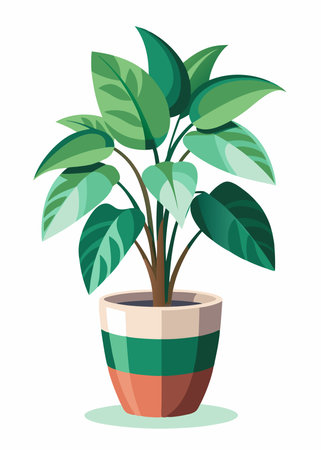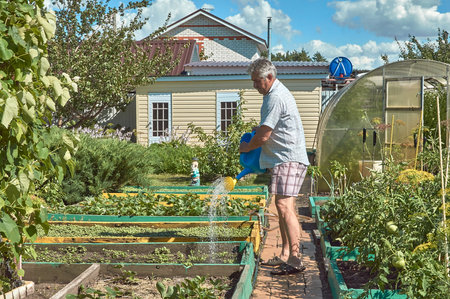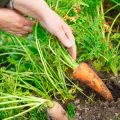1. Understanding the Water Needs of Cut Flowers
Water is one of the most important elements in keeping cut flowers fresh and beautiful, whether youre growing them for market or enjoying them at home. Different flower varieties have unique hydration requirements, and understanding these needs can make a big difference in how long your blooms last. In this section, we’ll explore how flower type, season, and even water quality affect the success of your cut flower arrangements.
Hydration Needs by Flower Type
Not all cut flowers are created equal when it comes to water uptake. Some flowers are “heavy drinkers,” meaning they require a lot of water quickly after being cut, while others take up water more slowly. Heres a quick guide:
| Flower Type | Water Uptake Rate | Special Notes |
|---|---|---|
| Roses | High | Recut stems underwater to prevent air bubbles |
| Sunflowers | Moderate to High | Use clean water; remove excess foliage |
| Tulips | Moderate | Keep cool; sensitive to warmer temps |
| Dahlias | High | Use floral preservative for best results |
| Zinnias | Low to Moderate | Quick dip in boiling water helps with vase life |
Seasonal Considerations
The time of year also affects how much water your flowers need. During hot summer months, evaporation rates are higher and plants may require more frequent watering. In cooler seasons like spring or fall, less frequent watering might be sufficient.
Tips Based on Season:
- Summer: Water early in the morning or late afternoon to reduce evaporation loss.
- Fall: Watch for overwatering as temperatures drop.
- Spring: Increase watering gradually as temperatures rise and plants grow faster.
- Winter (for greenhouse growers): Monitor humidity levels and avoid over-saturation.
The Role of Water Quality
The quality of water you use can directly impact the vase life of your cut flowers. Tap water often contains minerals or chemicals like chlorine that may shorten bloom longevity. Here are some things to watch for:
| Water Quality Issue | Effect on Flowers | Solution |
|---|---|---|
| Hard Water (high mineral content) | Blocks stem uptake; shortens vase life | Use filtered or distilled water if possible |
| Chlorinated Water | Toxic to certain delicate flowers like orchids | Let tap water sit out for 24 hours before use |
| Bacteria in Water | Makes stems slimy; causes rapid decay | Add floral preservative or change water daily |
A Few Extra Hydration Tips:
- Recut stems daily: This helps improve water uptake by removing blockages.
- Avoid direct sunlight: Keep vases in cool spots away from heat sources.
- No leaves below the water line: This prevents bacterial growth in the vase.
Caring for cut flowers starts with understanding their individual water needs. By choosing the right hydration techniques and paying attention to seasonality and water quality, you’ll enjoy longer-lasting, healthier blooms every time.
2. Manual Watering Best Practices
Manual watering is a practical and affordable method for small-scale cut flower growers. It gives you control over how much water each plant receives, helping prevent over- or under-watering. Here’s how to make the most of hand-watering in your flower garden.
Timing Matters
Watering at the right time of day can make a big difference in the health of your flowers. Early morning is ideal because it allows leaves to dry out during the day, reducing the risk of fungal diseases. Avoid watering in the heat of midday to minimize evaporation loss, and steer clear of evening watering, which can leave plants damp overnight and encourage mildew.
How Often Should You Water?
The frequency of watering depends on your soil type, weather conditions, and flower variety. Here’s a general guideline to follow:
| Soil Type | Watering Frequency |
|---|---|
| Sandy Soil | Every 1–2 days (drains quickly) |
| Loamy Soil | Every 2–3 days (holds moisture well) |
| Clay Soil | Every 3–4 days (retains water longer) |
Keep an eye on your plants—wilting leaves or dry topsoil are signs they may need more frequent watering.
Choosing the Right Tools
Your choice of watering tools can impact both efficiency and plant health. Consider these options:
- Watering Cans: Ideal for small plots or containers. Choose one with a detachable rose (sprinkler head) for gentle watering that won’t disturb soil or delicate stems.
- Garden Hoses with Nozzles: Great for larger beds. Look for adjustable nozzles that let you switch between spray patterns—from a soft mist to a focused stream—depending on your needs.
Recommended Nozzle Settings by Flower Type
| Flower Type | Nozzle Setting |
|---|---|
| Delicate blooms (e.g., Sweet Peas, Poppies) | Mist or Shower |
| Taller stems (e.g., Snapdragons, Sunflowers) | Gentle Spray |
| Densely planted beds | Semi-Fan Spray |
A Few More Handy Tips
- Avoid wetting foliage—aim for the base of the plant to reduce disease risk.
- Use mulch around your flowers to retain moisture and reduce how often you need to water.
- If possible, use rainwater collected in barrels—it’s soft, chlorine-free, and great for plants.
With consistent attention and good technique, manual watering can help ensure strong stems and vibrant blooms throughout the growing season.

3. Drip Irrigation Systems
Drip irrigation is one of the best watering solutions for cut flower production. It delivers water directly to the root zone, which helps flowers grow strong and healthy while reducing water waste. Whether youre growing in rows or raised beds, drip systems are a smart choice for both small gardens and larger flower farms.
Why Choose Drip Irrigation for Cut Flowers?
Unlike overhead sprinklers that can wet the foliage and cause disease, drip irrigation keeps water low and targeted. This means fewer fungal problems, better water use, and healthier plants overall. It also works great with mulching, which helps retain soil moisture even more.
Basic Components of a Drip System
Heres a simple breakdown of what you need to get started with drip irrigation:
| Component | Description |
|---|---|
| Mainline Tubing | The primary hose that carries water from your source to your planting area. |
| Drip Lines or Emitters | Tubes or devices that release water slowly at the base of each plant. |
| Filter | Keeps debris out of the system to prevent clogging. |
| Pressure Regulator | Makes sure water pressure stays consistent and safe for the system. |
| Timers (Optional) | Automates watering so your flowers get the right amount at the right time. |
Water Efficiency Benefits
A key advantage of drip irrigation is its efficiency. Because it targets only where water is needed, it minimizes evaporation and runoff. This not only saves water but also cuts down on utility bills. It’s especially helpful during dry seasons or in areas with watering restrictions.
Installation Tips
- Laying out your drip lines before planting makes setup easier.
- Bury lines under mulch to protect them from sun damage and reduce evaporation.
- If growing multiple flower varieties, group plants with similar water needs together for better control.
Maintenance Tips
A well-maintained drip system can last for years. Here are some maintenance tips:
- Check emitters regularly to make sure they aren’t clogged or leaking.
- Flush the system every few weeks to clear out sediment buildup.
- Clean or replace filters as needed, especially if using well or pond water.
4. Overhead Sprinkling vs. Subsurface Irrigation
When it comes to watering techniques for cut flower farming, choosing the right method can make a big difference in plant health, water usage, and disease control. Two common systems used by flower growers are overhead sprinklers and subsurface irrigation. Each has its own advantages and drawbacks depending on your farm’s layout, climate, and crop needs.
Overhead Sprinkling
Overhead sprinklers mimic natural rainfall by spraying water from above the plants. This system is easy to set up and widely available.
Pros:
- Easy Installation: Simple to install and modify as needed.
- Coverage: Can cover large areas quickly.
- Cooling Effect: Helps reduce heat stress during hot weather.
Cons:
- Disease Risk: Wet foliage encourages fungal diseases like powdery mildew and botrytis.
- Water Waste: Higher evaporation rates and runoff can lead to inefficient water use.
- Inconsistent Moisture: Wind can blow water off target, leading to uneven watering.
Subsurface Irrigation
This method delivers water directly to the root zone through buried drip lines or porous tubing. It keeps the soil moist where plants need it most while keeping the surface dry.
Pros:
- Disease Control: Keeps foliage dry, reducing risk of fungal infections.
- Water Efficiency: Minimizes evaporation and runoff for better water conservation.
- Targeted Watering: Delivers moisture directly to roots, promoting deeper growth.
Cons:
- Higher Setup Cost: Installation can be more expensive and time-consuming.
- Maintenance Needs: Lines may clog or get damaged underground without regular checks.
- Less Visible Operation: Harder to see if the system is working properly without digging or sensors.
Comparison Table: Overhead vs. Subsurface Irrigation
| Overhead Sprinkling | Subsurface Irrigation | |
|---|---|---|
| Disease Management | Poor – wet foliage increases disease risk | Excellent – keeps leaves dry |
| Water Conservation | Low – high evaporation and runoff | High – minimal waste and direct delivery |
| Installation Cost | Lower initial cost | Higher upfront investment |
| Cropland Coverage | Covers wide areas easily | Takes planning for full coverage |
| Maintenance Requirements | Easier access for repairs | Takes effort to detect issues underground |
The choice between overhead sprinklers and subsurface irrigation depends on your farms priorities—whether its ease of use or long-term efficiency. For flower farmers especially concerned about disease management and conserving water, subsurface irrigation often proves to be the better investment despite its higher setup costs.
5. Smart Irrigation Technologies
Smart irrigation technologies are changing the way home gardeners and flower farmers water their cut flowers. These tools help save water, time, and improve plant health by adjusting watering schedules based on real-time data like weather conditions and soil moisture levels.
Why Use Smart Irrigation for Cut Flowers?
Cut flowers need consistent, well-timed watering to thrive. Overwatering can lead to root rot, while underwatering causes wilting and poor bloom quality. Smart systems take the guesswork out of watering by using data to water only when needed.
Key Smart Irrigation Tools
| Tool | Description | Main Benefit |
|---|---|---|
| Smart Timers | Programmable devices that control watering times and duration | Reduces human error and saves time |
| Soil Moisture Sensors | Sensors placed in the ground to measure how wet or dry the soil is | Prevents over- or under-watering |
| Weather-Based Controllers | Adjusts watering based on local weather forecasts and rainfall data | Saves water during rainy periods |
| Mobile Apps | Apps that connect with smart devices to monitor and control irrigation remotely | Offers convenience and real-time updates |
How These Tools Work Together
When combined, these tools create a system that automatically adapts to changing conditions. For example, a soil moisture sensor can signal a smart timer to skip a scheduled watering if the soil is already moist. Similarly, a weather-based controller might delay watering if rain is expected.
Example Setup for a Backyard Flower Garden:
- A smart timer connected to drip irrigation lines around your flower beds
- Soil moisture sensors placed in different zones of the garden
- A mobile app that lets you adjust settings from your phone or tablet
- A weather-based controller integrated with a local forecast service
Tips for Getting Started:
- Start small—try one smart tool before upgrading your whole system
- Make sure your Wi-Fi signal reaches your garden area if using app-connected devices
- Regularly check sensor batteries and app updates for best performance
By using smart irrigation technologies, you can grow healthier cut flowers while being water-wise and saving time in your daily routine.

